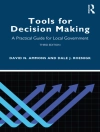Urban space is an important part of the political environment—a place where people congregate to discuss, deliberate, and interact with each other. In times of great public discontent, people often turn to urban spaces to make their opinions heard and to demand change, with varying degrees of success. How are mass protests affected by the urban public space in which they occur?
This book provides a theoretical model to analyze city spaces, based on the use of theories from political science, urban planning, and sociology. Hansen’s approach consists of a mapping of the causal mechanisms between spatial elements, the political environment, and their combined effects on protests. This mapping is applied to three case studies—Kyiv, Minsk, and Moscow.
In addition to the spatial perspective model, Urban Protest provides new insights as to how the interactions in space occur, and demonstrates how geography can create limitations and opportunities in a large variety of ways.
Giới thiệu về tác giả
The author:
Dr. Arve Hansen studied Russian, Ukrainian, and East European area studies in Minsk, Kyiv, and Tromsø. Since 2016 he is a member of the research group “Russian Space: Concepts, Practices, Representations” (RSCPR) at Ui T – The Arctic University of Norway. Hansen is co-author of the book A War of Songs: Popular Music and Recent Russia-Ukraine Relations (ibidem Press, 2019). His papers have been published by, among others, Nordisk Østforum, Nordlit, and the Norwegian Institute of International Affairs.
The author of the foreword:
Dr. Julie Wilhelmsen is a Senior Research Fellow at the Norwegian Institute of International Affairs in Oslo.












